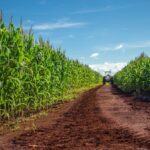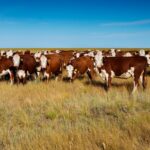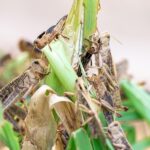Climate change has become a pressing issue for agriculture worldwide, and South Africa is no exception. Farmers are increasingly experiencing the impacts of unpredictable weather patterns, droughts, floods, and rising temperatures. These changes threaten food security and livelihoods, making it essential for farmers to adapt and adopt more sustainable practices. Climate-Smart Agriculture (CSA) offers a solution by helping farmers adjust to changing environmental conditions while ensuring productivity and resilience. Here’s how South African farmers can embrace Climate-Smart Agriculture and adapt to the changing climate.
1. Understanding Climate-Smart Agriculture (CSA)
Climate-Smart Agriculture (CSA) is an approach that seeks to address the challenges posed by climate change in agriculture. It focuses on three primary objectives:
- Increasing agricultural productivity: Ensuring that crops and livestock yield efficiently to meet the growing food demands.
- Enhancing resilience: Helping farmers adapt to climate variability and extreme events.
- Reducing greenhouse gas emissions: Mitigating agriculture’s contribution to climate change through sustainable practices.
CSA is not a one-size-fits-all solution, but a set of techniques and strategies tailored to the local climate, soil, and available resources.
2. Assessing Vulnerability and Risk
Farmers need to begin by assessing their vulnerability to climate risks. This includes identifying the specific threats their region faces, such as droughts, floods, or shifts in growing seasons. By understanding these risks, farmers can develop tailored CSA strategies that fit their unique needs.
For example:
- Farmers in drought-prone areas should prioritize water-saving techniques and drought-resistant crops.
- In regions facing heavy rains or floods, better drainage systems, and soil conservation methods can be essential.
3. Water-Smart Farming Practices
South Africa is a water-scarce country, and water management is critical in adapting to climate change. Here are some water-smart farming practices:
- Drip Irrigation: This method delivers water directly to plant roots, minimizing wastage and evaporation. It is one of the most efficient water management techniques for crops like maize, tomatoes, and fruit orchards.
- Rainwater Harvesting: Collecting rainwater during the rainy season can help ensure water availability during dry periods. Tanks and reservoirs can be used to store water for irrigation.
- Mulching: Using organic materials like straw or leaves to cover the soil can reduce water evaporation, helping to retain moisture in the soil.
4. Diversifying Crops and Livestock
Monoculture farming is highly vulnerable to climate risks, as one bad season can wipe out an entire crop. Diversifying crops and livestock can reduce risk by spreading it across different agricultural activities. For example:
- Drought-Resistant Crops: Switch to crops that can tolerate droughts, such as sorghum, millet, and cassava. These crops have lower water requirements and can survive under harsh conditions.
- Rotational Grazing for Livestock: Implement rotational grazing to prevent overgrazing and allow pasture regeneration. This can enhance the productivity and resilience of your livestock farming.
5. Conservation Agriculture
Conservation agriculture aims to improve soil health, enhance water retention, and protect the environment. It involves three main principles:
- Minimal Soil Disturbance: Avoid excessive tilling or plowing, which can degrade soil structure. Instead, use no-till or reduced-till methods to maintain soil integrity and improve water retention.
- Permanent Soil Cover: Keep the soil covered with cover crops or crop residues. This protects the soil from erosion, reduces water evaporation, and increases organic matter.
- Crop Rotation: Rotate crops each season to avoid depleting soil nutrients and to break pest and disease cycles.
These practices not only improve soil health but also reduce the need for chemical inputs, lowering production costs and environmental impact.
6. Using Climate-Resilient Technologies
Climate-smart technologies can play a pivotal role in helping farmers cope with changing conditions. These innovations include:
- Weather Forecasting Tools: Access to accurate and localized weather information can help farmers plan their planting, irrigation, and harvest schedules better. Mobile apps and online platforms provide real-time updates on weather conditions.
- Drought-Tolerant Seeds: Advances in biotechnology have led to the development of seeds that can withstand drought and heat stress. These seeds can be a game-changer for farmers in regions affected by water scarcity.
- Solar-Powered Irrigation: Solar-powered pumps for irrigation can reduce dependence on unreliable energy sources and lower production costs while ensuring consistent water supply.
7. Agroforestry for Resilience
Agroforestry is the practice of integrating trees with crops or livestock. Trees can offer numerous benefits, such as:
- Soil Protection: Tree roots help prevent soil erosion, especially on slopes, and improve soil structure.
- Water Conservation: Trees reduce water runoff and improve water infiltration into the soil.
- Carbon Sequestration: Trees absorb carbon dioxide from the atmosphere, reducing greenhouse gas levels.
Planting indigenous trees around fields or within farms can enhance biodiversity, provide shade for livestock, and create additional income streams through timber, fruit, or fuelwood.
8. Reducing Greenhouse Gas Emissions
Agriculture is a significant contributor to greenhouse gas emissions, particularly from livestock farming and chemical fertilizers. To mitigate this, farmers can:
- Optimize Fertilizer Use: Apply fertilizers based on soil testing to avoid overuse, which can lead to nitrous oxide emissions. Using organic fertilizers, such as compost, can also reduce the carbon footprint of farming.
- Better Livestock Management: Improve feed quality and adopt practices like rotational grazing to reduce methane emissions from livestock.
- Adopting Renewable Energy: Use renewable energy sources like solar power for irrigation systems, water pumps, and farm machinery, reducing reliance on fossil fuels.
9. Access to Knowledge and Support
Farmers must continually educate themselves on climate change and CSA practices. Collaboration with local agricultural extension services, research institutions, and farmer cooperatives can provide valuable insights into adapting farming practices to local conditions.
Government initiatives such as the Comprehensive Agricultural Support Programme (CASP) and National Development Plan 2030 promote sustainable agriculture and can assist farmers with financial and technical support for adopting CSA practices.
10. Financial Mechanisms and Insurance
Climate variability increases the financial risks farmers face. Consider:
- Crop Insurance: Weather-indexed insurance can provide financial protection against climate risks like droughts or floods, ensuring farmers are not left vulnerable after extreme events.
- Sustainable Finance: Look for government programs, banks, or cooperatives offering loans for farmers who wish to adopt climate-smart technologies and practices.
The unpredictable effects of climate change require South African farmers to adapt and innovate. Climate-Smart Agriculture offers a roadmap for managing these changes by enhancing productivity, improving resilience, and reducing environmental impact. By embracing water-saving technologies, diversifying crops, adopting conservation agriculture, and reducing emissions, South African farmers can protect their livelihoods and contribute to sustainable food systems for future generations.
Join 'Farmers Mag' WhatsApp Channel
Get the latest Farming news and tips delivered straight to your WhatsApp
CLICK HERE TO JOIN






